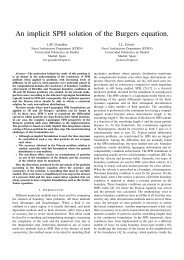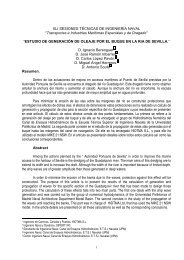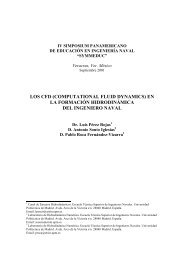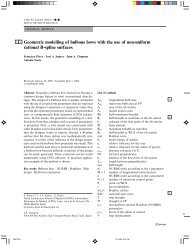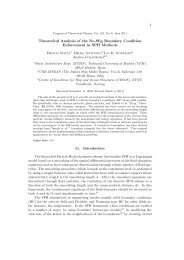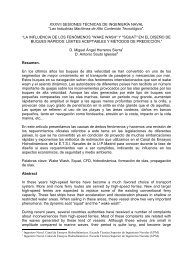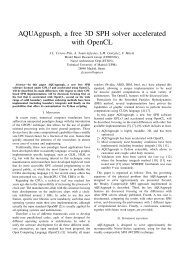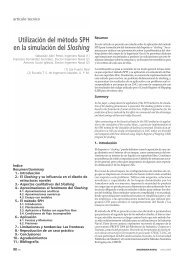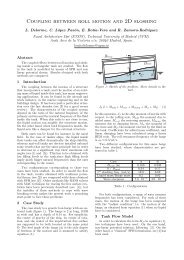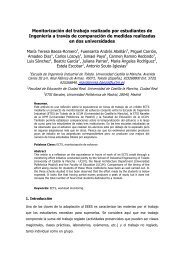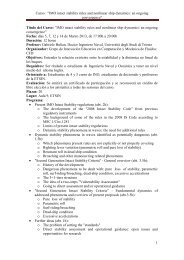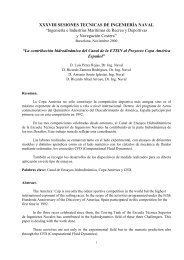imo and the safety of fishing vessels: past, present and future
imo and the safety of fishing vessels: past, present and future
imo and the safety of fishing vessels: past, present and future
You also want an ePaper? Increase the reach of your titles
YUMPU automatically turns print PDFs into web optimized ePapers that Google loves.
• navigation;<br />
• <strong>safety</strong> <strong>of</strong> <strong>the</strong> vessel;<br />
• <strong>safety</strong> on deck;<br />
• <strong>safety</strong> in <strong>fishing</strong> operations;<br />
• <strong>safety</strong> in machinery spaces <strong>and</strong> <strong>of</strong> mechanical equipment;<br />
• special <strong>safety</strong> precautions;<br />
• life-saving appliances;<br />
• fire precautions <strong>and</strong> fire fighting;<br />
• shipboard facilities for personnel,<br />
• <strong>safety</strong> organization <strong>and</strong> conditions for employment;<br />
• <strong>and</strong> ab<strong>and</strong>oning vessel, survival <strong>and</strong> rescue.<br />
It also includes several appendices. At <strong>the</strong> moment <strong>the</strong>re were no plans to revise this publication.<br />
As we can see <strong>the</strong> scope is limited to very basic information as is necessary for <strong>the</strong> safe conduct <strong>of</strong> <strong>fishing</strong><br />
operations. The Code leaves each Competent authority to take every possible measure to promote <strong>safety</strong> <strong>and</strong><br />
health aboard all <strong>fishing</strong> <strong>vessels</strong>, according to <strong>the</strong> criteria stated in this Part A <strong>of</strong> <strong>the</strong> Code.<br />
8.2.- FAO/ILO/IMO Code <strong>of</strong> Safety for Fishermen <strong>and</strong> Fishing Vessels – Part B<br />
As it is said in <strong>the</strong> preceding paragraph, The Code <strong>of</strong> Safety for Fishermen <strong>and</strong> Fishing Vessels originated<br />
from a resolution adopted by <strong>the</strong> International Labour Organization (ILO) in 1962. Subsequent to that<br />
resolution, <strong>the</strong> Food <strong>and</strong> Agriculture Organization (FAO), ILO <strong>and</strong> <strong>the</strong> International Maritime Organization<br />
(IMO) entered into an agreement to co-perate, within <strong>the</strong>ir respective fields <strong>of</strong> experience, to elaborate <strong>the</strong><br />
Code. The agreement reiterated that <strong>the</strong> respective areas <strong>of</strong> competence are:<br />
• FAO - fisheries in general;<br />
• ILO - labour in <strong>the</strong> <strong>fishing</strong> industry; <strong>and</strong><br />
• IMO - <strong>safety</strong> <strong>of</strong> life, <strong>vessels</strong> <strong>and</strong> equipment at sea.<br />
<strong>the</strong> Code was elaborated in two parts:<br />
• Part A addressed to skippers <strong>and</strong> crews, containing operational <strong>and</strong> occupational requirements;<br />
<strong>and</strong><br />
• Part B addressed to shipbuilders <strong>and</strong> owners containing requirements for <strong>the</strong> construction <strong>and</strong><br />
equipment for <strong>fishing</strong> <strong>vessels</strong>.<br />
The International Conference on <strong>the</strong> Safety <strong>of</strong> Fishing Vessels (where <strong>the</strong> Torremolinos Protocol was<br />
adopted), also adopted, inter alia, resolution 4 in which it is noted that <strong>the</strong> Protocol does not contain specific<br />
requirements for certain <strong>safety</strong> equipment for <strong>fishing</strong> <strong>vessels</strong> <strong>of</strong> less than 45 m in length, such as life-saving<br />
appliances. Consequently, it urged all States, in view <strong>of</strong> <strong>the</strong> inherent risks involved in <strong>the</strong> operation <strong>of</strong> <strong>fishing</strong><br />
<strong>vessels</strong>, to consider <strong>the</strong> requirements for <strong>safety</strong> equipment when deciding, in accordance with article 3(4) <strong>of</strong><br />
<strong>the</strong> Protocol, which regulations <strong>the</strong>y should apply, wholly or in part, to <strong>fishing</strong> <strong>vessels</strong> <strong>of</strong> 24 m in length <strong>and</strong><br />
over but less than <strong>the</strong> applicable length criteria <strong>of</strong> <strong>the</strong> chapter in question.<br />
It was also noted that initiatives had been taken by certain States to develop uniform regional st<strong>and</strong>ards as<br />
called for in article 3(5) <strong>of</strong> <strong>the</strong> Protocol to ensure that <strong>the</strong> <strong>safety</strong> <strong>of</strong> <strong>fishing</strong> <strong>vessels</strong> covered by article 3(4)<br />
<strong>the</strong>re<strong>of</strong> is maintained at an acceptable level by determining which regulations, contained in <strong>the</strong> annex to <strong>the</strong><br />
Protocol should apply, wholly or in part, to such <strong>vessels</strong>.<br />
In its review <strong>of</strong> regional st<strong>and</strong>ards so developed, <strong>the</strong> MSC <strong>of</strong> IMO noted that <strong>the</strong>y had been examined by <strong>the</strong><br />
Sub-Committee on Stability <strong>and</strong> Load Lines <strong>and</strong> on Fishing Vessels Safety (SLF) with a view to <strong>the</strong> desirability<br />
<strong>of</strong> developing a template for o<strong>the</strong>r countries or regions (see documents MSC 68/INF.10 <strong>and</strong> MSC 70/INF.24).<br />
17



